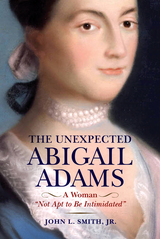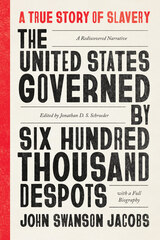4 books by Crowley, John
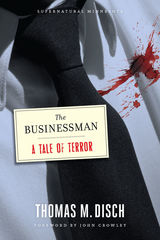
Thomas M. Disch
University of Minnesota Press
The Businessman presents the sinister tale of Bob Glandier, a morally repulsive Twin Cities executive who murders his estranged wife and attempts to go back to business as usual, until she returns sets about arranging his divine retribution. With help from her dead mother and the ghost of poet John Berryman-thoroughly bored of suburban séances and all too eager to lend a hand-Giselle undertakes the elaborate, righteous, and wickedly amusing haunting of her husband. There is justice in the afterlife after all-at least in Minnesota.
[more]
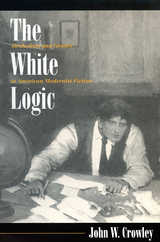
John W. Crowley
University of Massachusetts Press
The first extended literary analysis to take account of recent work by social historians on the temperance movement, this book examines the relationship between intoxication and addiction in American life and letters during the first half of the twentieth century. In explaining the transition from Victorian to modern paradigms of heavy drinking, Crowley focuses on representative fictions by W. D. Howells (The Landlord at Lion's Head), Jack London (John Barleycorn), Ernest Hemingway (The Sun Also Rises), F. Scott Fitzgerald (Tender Is the Night), John O'Hara (Appointment in Samarra), Djuna Barnes (Nightwood), and Charles Jackson (The Lost Weekend).
Crowley considers the historical formation of "alcoholism" and earlier concepts of habitual drunkenness and their bearing on the social construction of gender roles. He also defines the "drunk narrative," a mode of fiction that expresses the conjunction of modernism and alcoholism in a pervasive ideology of despair--the White Logic of John Barleycorn, London's nihilistic lord of the spirits.
Crowley considers the historical formation of "alcoholism" and earlier concepts of habitual drunkenness and their bearing on the social construction of gender roles. He also defines the "drunk narrative," a mode of fiction that expresses the conjunction of modernism and alcoholism in a pervasive ideology of despair--the White Logic of John Barleycorn, London's nihilistic lord of the spirits.
[more]
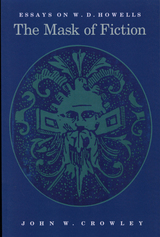
John W. Crowley
University of Massachusetts Press
W. D. Howells (1837-1920) occupies a peculiar position in our current literary history. Situated on the periphery, he is one of whose "marginality" seems, nevertheless, to be a necessary counterpart to the "centrality" of other writers--such as his friends Henry James and mark Twin--who are more securely fixed in the canon. Paradoxically, Howells has been an indispensable man in the middle, linking such binary pairs as East/West, romance/realism, elitism/socialism, patriarchal canon/women writers. This volume brings together nine related essays by John W. Crowley. The first four center respectively on Howells and the Civil War, his attitudes toward women, his friendship with a homosexual writer, and the tragically short life of his daughter Winifred. Crowley's overarching purpose here is to establish Howells as perhaps the representative male writer of his time, within the gender codes of Victorian America. The last five chapters discuss Howell's later fiction, focusing on its intense concern with psychology an psychic phenomena. Crowley not only brings this relatively neglected work more fully into view, but also argues that Howells used the writing of this fiction as a process of psychological self-healing that resembles the self-analysis of Sigmund Freud during the same years.
[more]
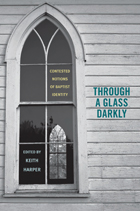
Through a Glass Darkly
Contested Notions of Baptist Identity
Keith Harper
University of Alabama Press, 2012
Normal0falsefalsefalseMicrosoftInternetExplorer4
Through a Glass Darkly is a collection of essays by scholars who argue that Baptists are frequently misrepresented, by outsiders as well as insiders, as members of an unchanging monolithic sect.
In contemporary discussions of religious denominations, it is often fashionable and easy to make bold claims regarding the history, beliefs, and practices of certain groups. Select versions of Baptist history have been used to vindicate incomplete or inaccurate assertions, attitudes, and features of Baptist life and thought. Historical figures quickly become saints, and overarching value systems can minimize the unsavory realities that would contribute to a truer interpretation of Baptist life.
The essays in this volume use the term Baptist in the broadest sense to refer to those Christians who identify themselves as Baptists and who baptize by immersion as a non-sacramental church rite. Over the past four hundred years, Baptists have grown from a persecuted minority to a significant portion of America’s religious population. They have produced their fair share of controversies and colorful characters that have, in turn, contributed to a multifaceted history.
But what does it mean to be a “real Baptist”? Some look to historical figures as heroic exemplars of Baptist core values. Others consider cultural, social, or political issues to be guideposts for Baptist identity. Through a Glass Darkly dives deeper into history for answers, revealing a more complete version of the expansive and nuanced history of one of America’s most influential religious groups.
Normal0falsefalsefalseMicrosoftInternetExplorer4
Contributors:
James P. Byrd / John G. Crowley / Edward R. Crowther / Christopher H. Evans / Elizabeth H. Flowers / Curtis W. Freeman / Barry G. Hankins / Paul Harvey / Bill J. Leonard / James A. Patterson / Jewel L. Spangler / Alan Scot Willis
[more]
READERS
Browse our collection.
PUBLISHERS
See BiblioVault's publisher services.
STUDENT SERVICES
Files for college accessibility offices.
UChicago Accessibility Resources
home | accessibility | search | about | contact us
BiblioVault ® 2001 - 2024
The University of Chicago Press


